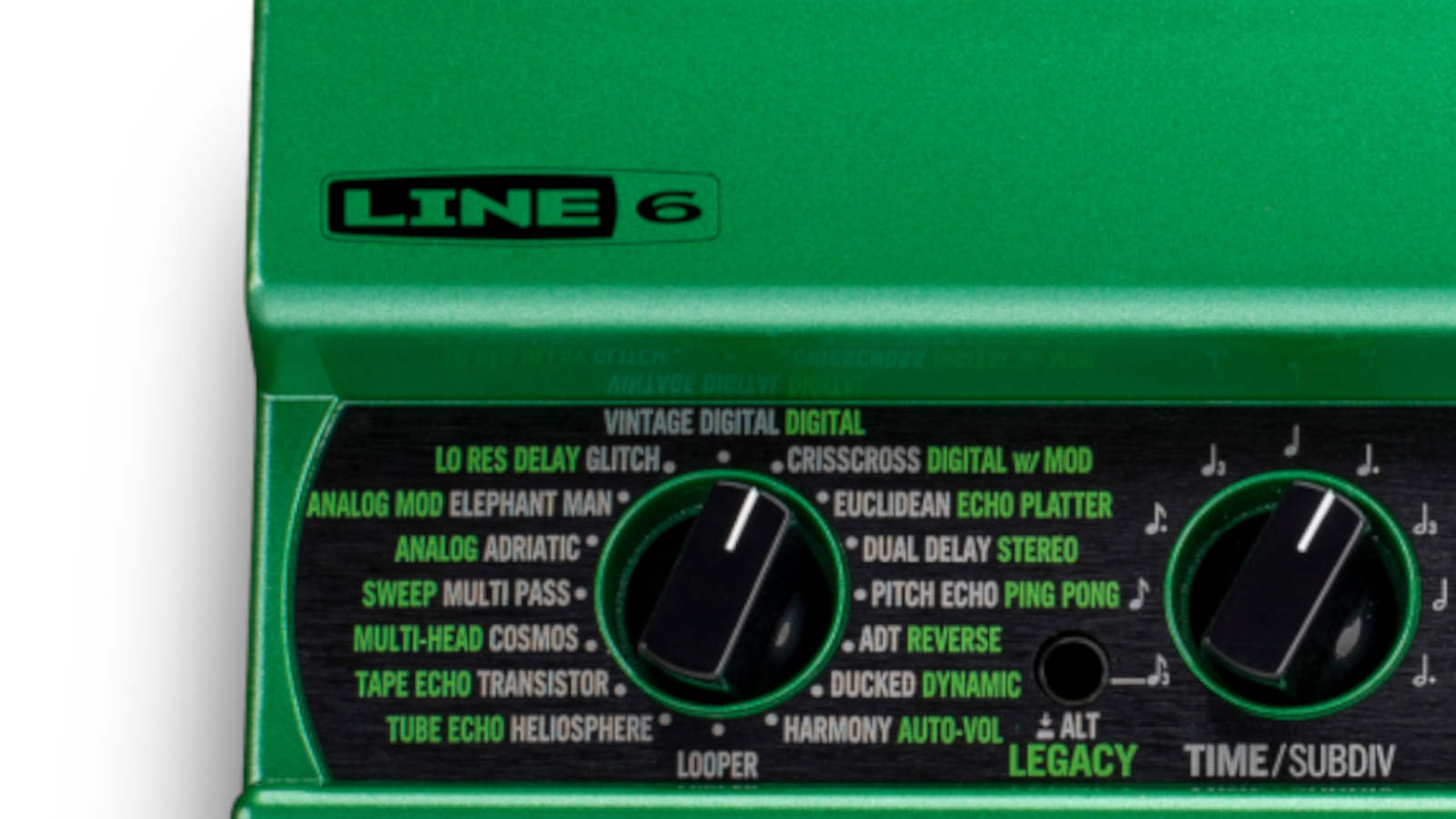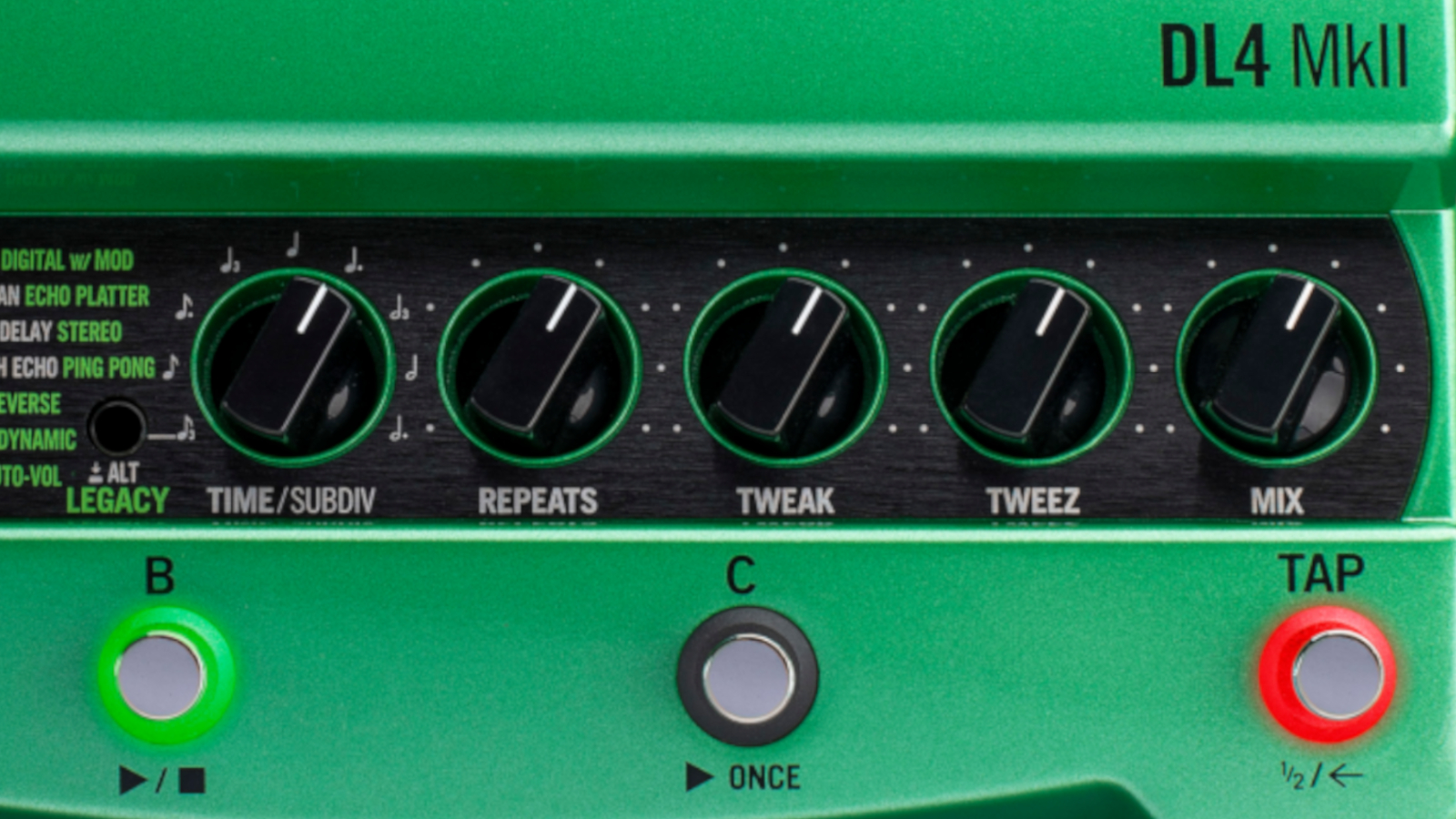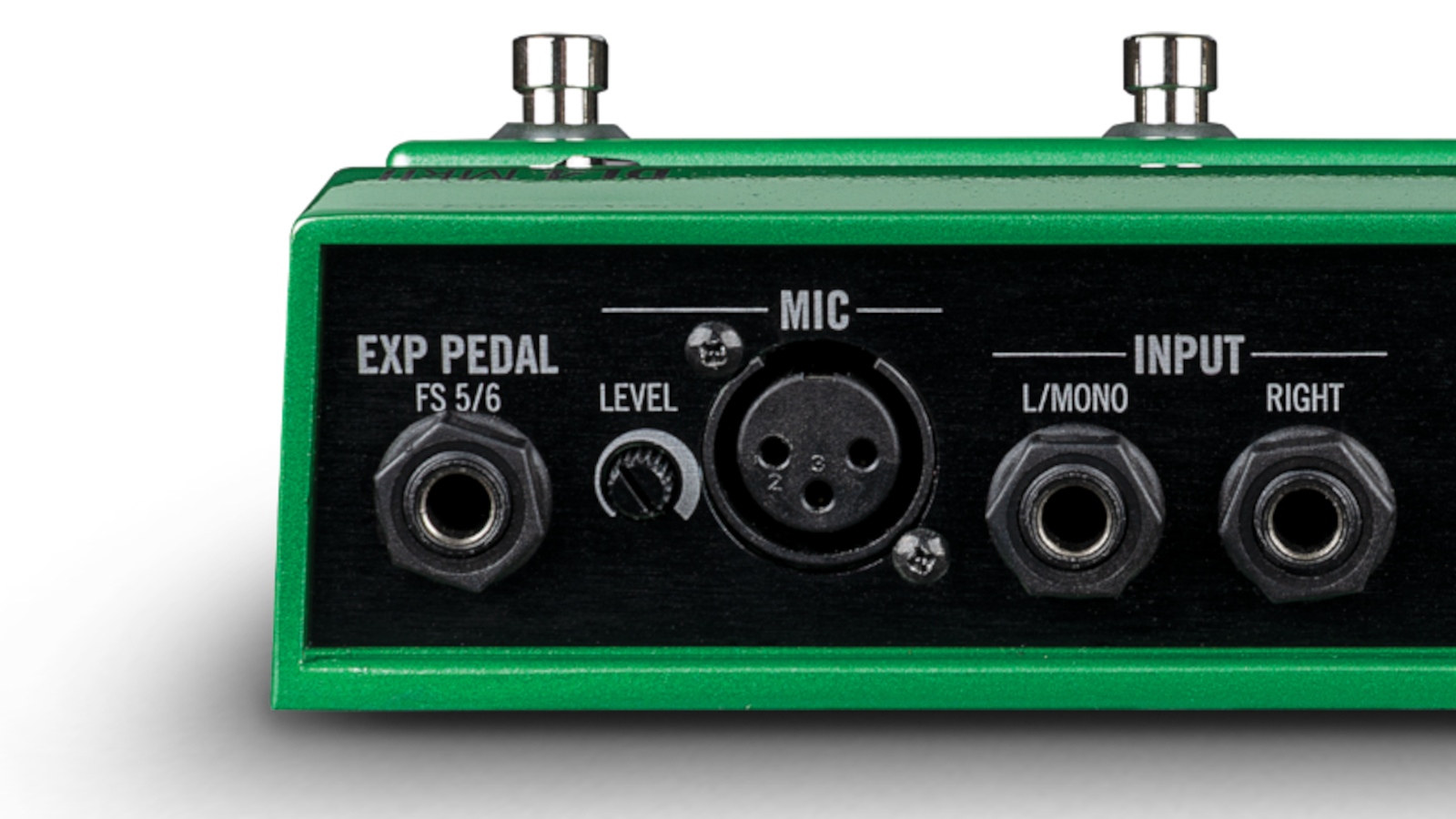GuitarPlayer Verdict
One of the most comprehensively functional and sonically rewarding delay units on the market, by any measure.
Pros
- +
A bushel-basket full of great-sounding classic and modern delays
- +
Several handy reverb selections
- +
Built-in looper with long times available
Cons
- -
Some users might find the mix knob taper a little abrupt in places, but it closely mirrors that of the original
You can trust Guitar Player.
Dubbed the Big Green Monster for its imposing size and unmistakable color, the original Line 6 DL4 Delay Modeler was released in 1999 to broad acclaim and popped up seemingly overnight on hundreds of touring pro rigs.
Offering 14 types of delay plus a functional looper, it packed a lot into what is widely regarded as the most popular of the first successful line of modeling effects pedals (as opposed to merely “digital” effects pedals that use traditional DSP to create delays, reverb or modulation).
It also did it using a big box that measured 10 inches wide, six inches deep and two and a half inches high) and required a dedicated 1,200mA nine-volt AC power supply if you didn’t want to burn through four D-cell batteries every 30 hours or so.

The stunning new DL4 MkII has just been released, and it packs more than three times the features of the original DL4 into a box about 20 percent smaller and some 30 percent lighter.
By those criteria alone, it should quickly become a modern classic.
Wisely, Line 6 has retained the familiar radioactive frog-green finish, an eye-catching color that will help identify the unit on the pedalboards of the pros.
Packs more than three times the features of the original DL4 into a box about 20 percent smaller and some 30 percent lighter
As Line 6 likes to tell us up front, the DL4 MkII carries everything the original had (and I certainly haven’t yet found anything to disprove that), plus 15 new delays drawn from the company’s HX series of effects and amp processors, and a considerably expanded memory and function for the looper.
All the latest guitar news, interviews, lessons, reviews, deals and more, direct to your inbox!
The latter includes both four-button and single-button loop control with a whopping 240 seconds of onboard memory (operable in either stereo or mono, before or after other effects). This can be expanded to several hours with an optional microSD card.

Among the new bonus features are the so-called Secret Reverbs. Pushing and releasing the Alt/Legacy mode button toggles between the MkII Delays and the original DL4 Legacy Delays, accessed by the 16-position rotary selector.
Pushing and holding that button while rotating the selector accesses 15 reverb types (named on the included cheat sheet, since there’s no room left on the face of the pedal), from room to plate to particle ’verb to hot springs and more.
The remaining adjustment knobs on the unit – time/subdiv, repeats, tweak and tweez – likewise adjust reverb parameters when the Alt/Legacy button is pushed and held, while mix, the last control, performs similarly across both.
Foot switches A, B and C offer three saved presets and double for looping functions, as does the tap foot switch.

Unlike the original, the MkII includes three selectable bypass modes: True Bypass, Buffered and DSP. The first two route the signal directly from input to output (engaging a buffering preamp in the second), while DSP keeps it all running through the A/D/A conversion.
Round back, connectivity has been majorly upgraded to keep up with today’s demands.
The DL4 MkII retains the stereo ins and outs on quarter-inch jacks, while adding an XLR input with level control for directly connecting a dynamic microphone, plus a USB-C connection for firmware updates and computer-generated presets and MIDI selection.
Two DIN connectors offer MIDI in and out/thru, and the TRS expression-pedal jack can be used to connect two more assignable foot switches.
Connectivity has been majorly upgraded to keep up with today’s demands
Power comes from a far more conventional nine-volt DC 500mA source (supplied).
It’s all housed in a cast-aluminum box that, despite being streamlined, reflects the original’s style, with even better protection for the knobs in a recessed trough that puts them well below the sole of your descending Doc Marten.

I used an original DL4 off and on for many years from the time it first came out, and I still have that one in a drawer about an arm’s reach from my desk.
Even my first few minutes with the MkII plugged in made me want to get the green monster back on my board for good, but further explorations revealed the pedal in its MkII form to be one of the most comprehensively functional and sonically rewarding delay units on the market, by any measure.
I tested the DL4 MkII with several electric guitars in front of and in the loops of a selection of traditional amps, as well as in stereo into my Universal Audio Apollo Twin Duo interface to appreciate the effects in the headphones.
The sounds are extremely good throughout and – as one would expect a quarter century on – realistic
The sounds are extremely good throughout and – as one would expect a quarter century on – realistic.
For classic echoes, you’d be hard pressed to find anything amiss, and the range of tweakable creative alternatives doubles or triples those sonic opportunities.
Most of the meat ’n’ potatoes delays are still found on the Legacy side, with plenty of the MkII slots offering more unusual modes. Some of the new ones – the Elephant Man and Euclidean settings, for example – present juicy fresh takes on the archetypes.

Some old-school players who just need a delay or two and don’t want the complication of the added features might still lean toward their genuine analog echo boxes (and to be fair, it behooves you to spend a little time with the manual and at least learn how to program three favorite presets), but I’d challenge you to find anyone in the audience who could hear the difference, or indeed, to really hear the difference yourself up onstage with a five-piece band raging alongside you.
It’s worth noting that the same goes for the quality of the Secret Reverbs, the usefulness and added-value-factor of which cannot be overstated.
The brilliance of the Line 6 DL4 MkII re-think is pretty much off the charts
Beyond the basics of “how does it sound?” the DL4 is just a massively handy echo box by any measure, and I haven’t even discussed the looper yet (although it’s tremendously functional, and I’ve enjoyed it enormously), another feature which is likely worth the price of admission on its own (although, sadly, there isn’t enough room here to attempt a full assessment of it).
All told, the brilliance of the Line 6 DL4 MkII re-think is pretty much off the charts, so let’s leave it at that.

Even if you just want to use it for three presets that cover your basic delay needs live, and maybe replace your reverb unit in the process, the MKII sounds great and is likely worth the outlay, even at its list price – and at the sub-$300 street price… sheesh! What a bargain.
Add in the versatility of some 30 delay types, Secret Reverbs, looping and more, and c’mon, need I say more?
It’s an Editors’ Pick Award winner if ever there was one, and good luck getting this one back from me.
Specifications:
- CONTROLS: Delay selector, time/subdiv, repeats, tweak, tweez, mix. Alt/Legacy pushbutton, four foot-switches; level control for XLR input on the back panel.
- EXTRAS: Stereo inputs and outputs, TRS expression-pedal/foot-switch connection jack, XLR mic input, DIN MIDI in and out/thru. USB C, microSD card slot, center-negative 9VDC adaptor input
- SIZE: 9.25” x 4.41” x 2”
- BUILT: Assembled in China
Dave Hunter is a writer and consulting editor for Guitar Player magazine. His prolific output as author includes Fender 75 Years, The Guitar Amp Handbook, The British Amp Invasion, Ultimate Star Guitars, Guitar Effects Pedals, The Guitar Pickup Handbook, The Fender Telecaster and several other titles. Hunter is a former editor of The Guitar Magazine (UK), and a contributor to Vintage Guitar, Premier Guitar, The Connoisseur and other publications. A contributing essayist to the United States Library of Congress National Recording Preservation Board’s Permanent Archive, he lives in Kittery, ME, with his wife and their two children and fronts the bands A Different Engine and The Stereo Field.


